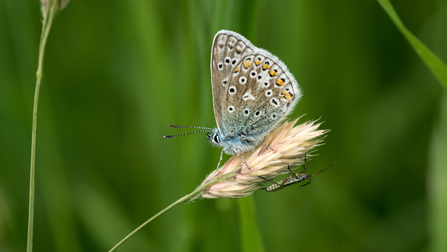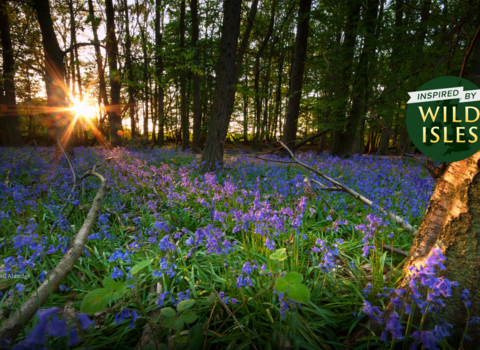Last night, thousands of us flocked around our television screens to watch the very first episode of BBC Wild Isles – and what a treat it was! From orca seeking out grey seals, to barnacle geese being chased by white-tailed eagles – it was a fascinating insight into the wildlife found right here in Britain and Ireland. The Wildlife Trusts were delighted to be part of the filming for this episode, with Wiltshire Wildlife Trust’s fabulous Clattinger Meadow used as one of the locations. Here, Eleanor Dodson, Digital Marketing & Communications Officer from Wiltshire Wildlife Trust shares more of the wonderful wildlife that can be found at this great spot!
Ever heard of the phrase ‘as like as chalk and cheese’? This expression was coined in Wiltshire and refers to the two different types of grassland we have in the county! Wiltshire is lucky enough to have both neutral hay meadows in the north and chalk grasslands in the south.
Clattinger Meadow at Lower Moor nature reserve is a hay meadow, unique because it is the only lowland farm in Britain to have never received an application of agricultural chemicals.
Rare snakeshead fritillaries cover the meadow in late April and up to eight species of orchid can be seen in May and June. Wildflowers such as meadow saffron, tubular water-dropwort, orchids and downy-fruited sedge carpet the land in summer and in winter, wading birds such as teal, lapwing and snipe forage on the wet meadows.
Seasonal hay cutting takes place in these meadows, which helps to remove nutrients and enables delicate wildflowers to survive alongside more nutrient-hungry and competitive grasses. That is why hay meadows with a long, unbroken history of traditional management are so rich in wildflowers. This rich species diversity classifies Clattinger Meadow as a Site of Special Scientific Interest.


